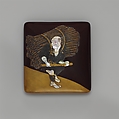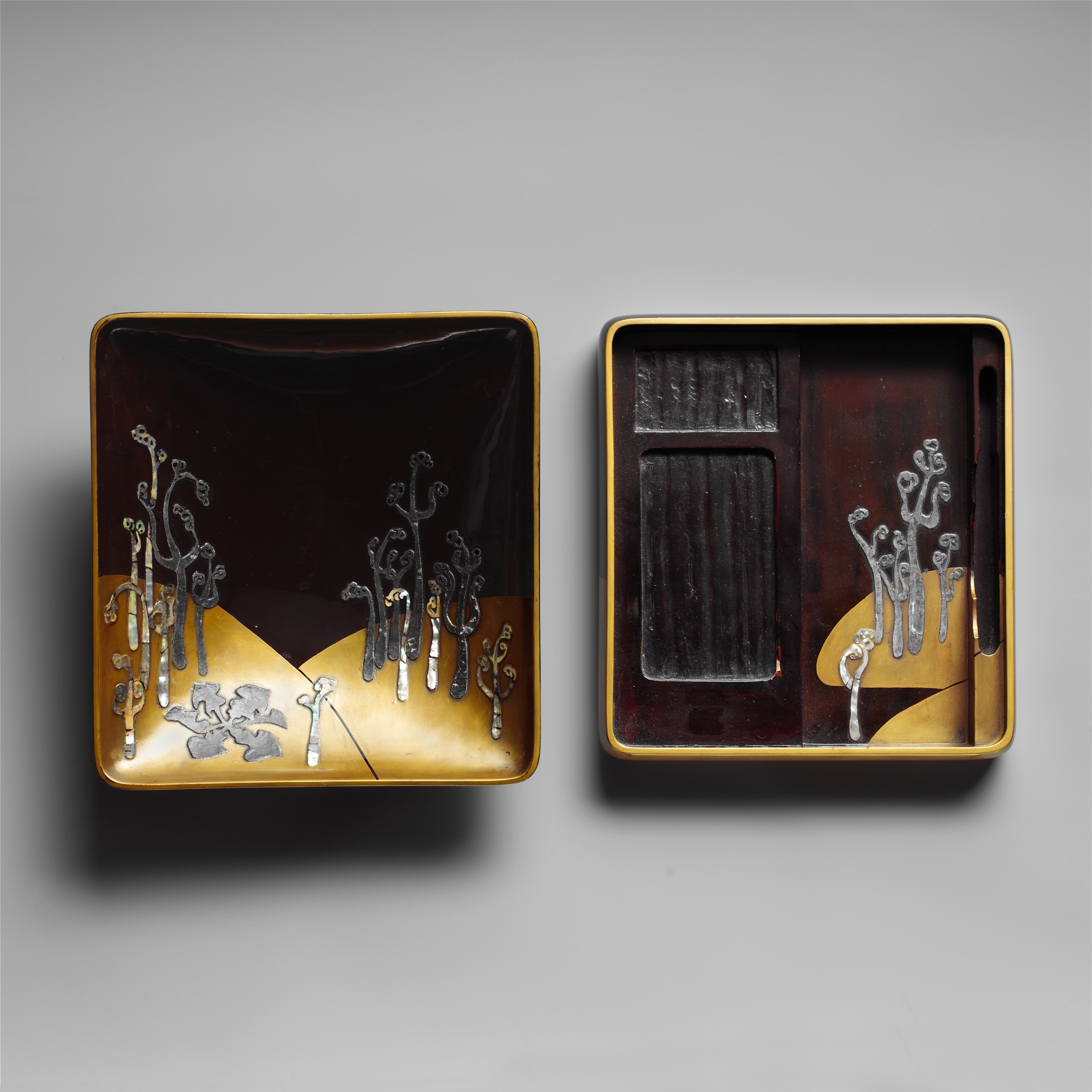Writing Box (Suzuribako) with Woodcutter
In the style of Hon'ami Kōetsu Japanese
Not on view
Both the image of a rustic figure carrying a load of kindling and the rounded box lid on which it appears are based on a lacquer writing box attributed to the noted calligrapher and potter Hon’ami Kōetsu (1558–1637). Kōetsu is recognized as one of the founders of the Rinpa movement, which drew inspiration from traditional Japanese literature. The motif of the woodcutter was often repeated in lacquers and may allude to chapter 48 of The Tale of Genji (Genji monogatari), in which a former teacher sends shoots of bracken fern (warabi) to Nakanokimi, the bride of Genji’s grandson Niou; to a Noh play referring to a poet of ancient times who meets a woodcutter in the mountains; or, perhaps, to both.
Whatever the precise inspiration, the Kōetsu design was copied by lacquer artists in subsequent centuries and became one of the most popular Rinpa design motifs for lacquer writing boxes and inrō. The Metropolitan Museum has no fewer than four lacquer writing boxes with the same design, demonstrating how motifs were transmitted from generation to generation by direct copying and by the study of woodblock-printed drawing manuals of Rinpa motifs.
Due to rights restrictions, this image cannot be enlarged, viewed at full screen, or downloaded.
This artwork is meant to be viewed from right to left. Scroll left to view more.



